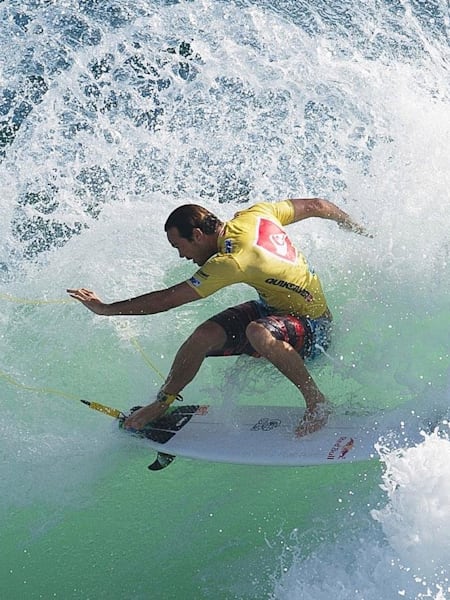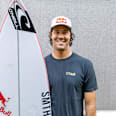Every single surfboard we ride carries a crucial piece of DNA from designs long gone. That concave bottom? The three-stage rocker? The tucked-edge rail? It all comes from experimental designs from surfing's past.
Is there anything better for your surfing education than to peel open the leather-bound book of designs-long-gone and actually… ride one of them?
I'm not saying it's going to be easy to find these boards, but over the course of your life, you'll bump into them. You might see someone riding one, they might turn up at a flea market or a pawn shop. If you get the chance, take it.
Now let's explore what you should ride.
1. The Greg Webber banana
In 1992, the year that Kelly Slater would win his first world title, he was beaten, and impressively beaten, in the first event by the Australian Shane Herring. And Shane's secret weapon was a hyper-curved, heavily concaved pintail, made by Greg Webber. The design died as quickly as it came when it became apparent the boards couldn't be ridden, even by the very best, unless the waves had enough curve or power to drive the extreme design.
At the time Greg refused to compromise the design by making it more accessible. "They were like Greg's Chernobyl experiment, just super volatile and unstable," says Slater, who, last week, took delivery of three banana boards but with a lower rocker. If you see a banana, you've gotta try it, if only for it to become apparent how good any surfer is who can ride them.
2. An original Simon Anderson Thruster
This design isn't the most difficult in the world to find, thanks to Simon Anderson's re-issue of his game-changing three-finned board from 1981. You will ride this because, more than any other design, it dramatically changed the way we ride waves.
Like a businessman seeing a gap in the market, the Australian shaper and pro surfer saw a gap, literally and figuratively, between the looseness of the twin-fin and the stickiness of the single.
The solution? Three fins! Initially slow to be accepted as anything but a gimmick, when Simon won events in everything from small Narrabeen to giant Bells and then mid-sized Pipe, orders soon began to pile up. Thirty-four years later, it's still the most dominant fin setup.
3. The Lost Round-Nose fish
First created for Chris Ward in 1994, it was the shaper Matt Biolos' version of the twin-fin "fish" created by the San Diego kneeboarder Steve Lis in 1971. Biolos took his cue from a bunch of late-'70s and early-'80s twin fins that he saw on the wall of his local surf store, BC Surfshop.
The result of putting what was then one of the most radical surfers in the world on such a radical design and then making a film of Lost teamriders surfing them (5'5" x 19 1/4"), was "an explosion," says Biolos. "Shapers all over the world were calling me and saying thanks for making that movie 'cause all of a sudden, everyone needed a new surfboard."
Why should you ride one? Because it still works. Lost makes the re-issues off the original templates, too. Get on one and you may never get off.
4. Tom Curren's Black Beauty
There was a time in the '80s when the Santa Barbara surfer Tom Curren was simultaneously the best and most stylish surfer in the world. A Craig Anderson-John John Florence hybrid, if you want to give it a modern interpretation. His famous black-railed board Black Beauty is, yeah, a beauty to ride, designed entirely around flow and speed. In December 2013, Conner Coffin was featured on the cover of Surfer magazine riding a six-foot version of the design. A testimony to the enduring themes of power and good style.
5. Jordy Smith's Girabbit (or Kolohe's Sub Scorcher)
First, find a pro surfer who fits your size. Let's say you're either a Jordy Smith or a Kolohe Andino. Therefore, you want to ride either a GiRabbit (Jordy's go-to Channel Islands model in good surf) or a Sub Scorcher, Kolohe's signature board. You will ride these boards because, a) they're at the apex of high-performance design and therefore, b) all those excuses we have for not landing our airs, for not making our fin throws, is erased.





